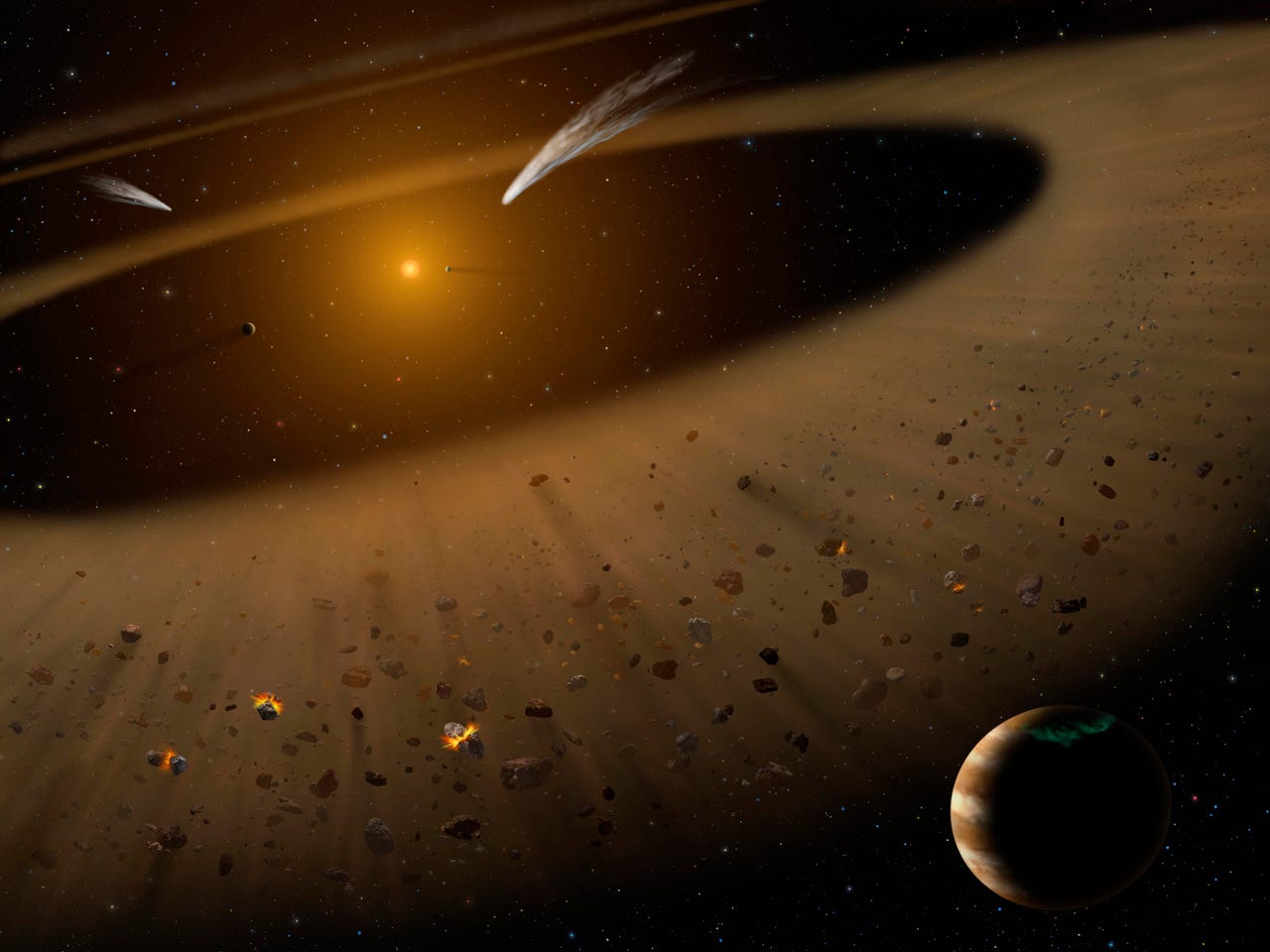Lab that found universe's first molecule celebrates milestone


Infrared light, invisible to the human eye, can be the portal to an invisible universe. That was the motivating premise behind NASA's Stratospheric Observatory for Infrared Astronomy (SOFIA), which flies 45,000 feet above earth on a modified Boeing 747SP and has been making discoveries beyond the visible light spectrum for the last decade.
SOFIA, managed by Universities Space Research Association (USRA), celebrates its tenth anniversary on May 26, 2020, and a quick look back at its accomplishments underscore what a fruitful ten years its been.
For example, SOFIA found a molecule called helium hydride, the first type of molecule to form in the universe, which came into existence just 100,000 years after the Big Bang, a starting gun in a long process that eventually led to our universe. Long theorized, the molecule had never been detected outside of a laboratory until SOFIA found it in a planetary nebula called NGC 7027, confirming our evolving understanding of the origins of the cosmos.
"SOFIA is currently the only astronomical observatory capable of delivering data at its unique wavelengths to the astronomical community," noted Margaret Meixner, USRA Director, Science Mission Operations for SOFIA, underscoring the importance of this singular research platform.
For astronomy geeks, the laboratory has yielded a number of other illuminating findings. Infrared detection allowed the lab to notice that the stellar wind from a newborn star in the Orion Nebula is preventing more new stars from forming nearby thanks a kind of bubble effect known as "feedback."
The observatory also verified that the planetary system around the star Epsilon Eridani has an architecture remarkably similar to our solar system. Oh, and good news: Magnetic fields in the Milky Way may be keeping our system's black holes at rest. SOFIA detected magnetic fields, shown as streamlines, that may be channeling the gas into an orbit around the black hole, rather than directly into it. This may explain why our galaxy's black hole is relatively quiet, while those in other galaxies are actively consuming material.
In other positive news (so welcome during lockdown), turns out dust survives what would seem to be certain obliteration in a supernova. In fact, SOFIA discovered that a supernova explosion can produce a substantial amount of the material from which planets like Earth can form. That conclusion was reached after infrared observations of a cloud produced by a supernova 10,000 years ago concluded the cloud contains enough dust to make 7,000 Earths.
Do you know what happens when exoplanets collide? It's cool, I didn't either. Turns out a double star system known as BD +20 307, which is a tick over 300 light-years from Earth, likely had an extreme collision between rocky exoplanets. SOFIA observed that debris in the system was warmer than expected by detecting the infrared brightness, an indication that a collision occurred relatively recently. The same process may be responsible for our moon.
"We believe the best is yet come in the remaining years in SOFIA's planned life-time, and perhaps beyond, based on its new and archival datasets. For example, SOFIA observations are being used in tandem with other major ground-based and space-based astronomical observatories to study our galaxy and solar system (e.g. Earth's Moon and other planets) and galaxies far beyond," says USRA's Ghassem Asrar, Senior Vice President, Science.
Here's to many more years ahead for ambitious astronomy like this.